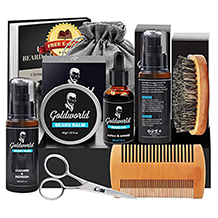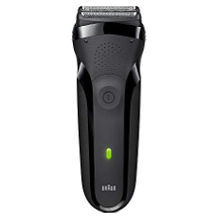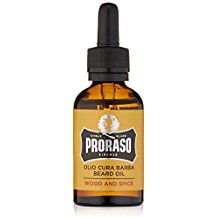Beard trimmer purchasing advice: how to choose the right product
- What you need to know
- Beard trimmers are designed for shortening your beard and cutting contours.
- The devices differ in the way they work and are equipped differently depending on their use.
- Choosing the right beard trimmer depends on the type of beard you have.
- The quality of a trimmer depends on its functions, accessories and handling. Pay attention to the manufacturer’s specifications!
Benefits of beard trimmers
Beards have been a constant companion of many men since time immemorial. From ancient times to modern times, beards have been worn and groomed: as a fashion trend, political statement or out of good manners. Today, facial hair is more popular than ever. However, if you want to follow the trend, you must make sure that your beard is well-groomed. For this, beard trimmers are indispensable. With them, you can cut your beard to its desired length and choose an individual style. Individual hairs that stick out can quickly give an unkempt appearance. With a beard trimmer, your can achieve a well-groomed look quickly and easily.
Hair trimmer ≠ beard trimmer
Some men also use hair trimmers for their beards, but as the name suggests, there is a difference: hair trimmers are designed for the hair on the top of your head. The arrangement and nature of the blades are different on hair trimmers. They are much coarser and mostly made of stainless steel. Hair trimmers are also far less precise.
Choose your device
There is a wide range of beard trimming products to choose from. It is important to inform yourself about the types of devices on the market before buying a beard trimmer so as not to be confused by the huge variety out there.
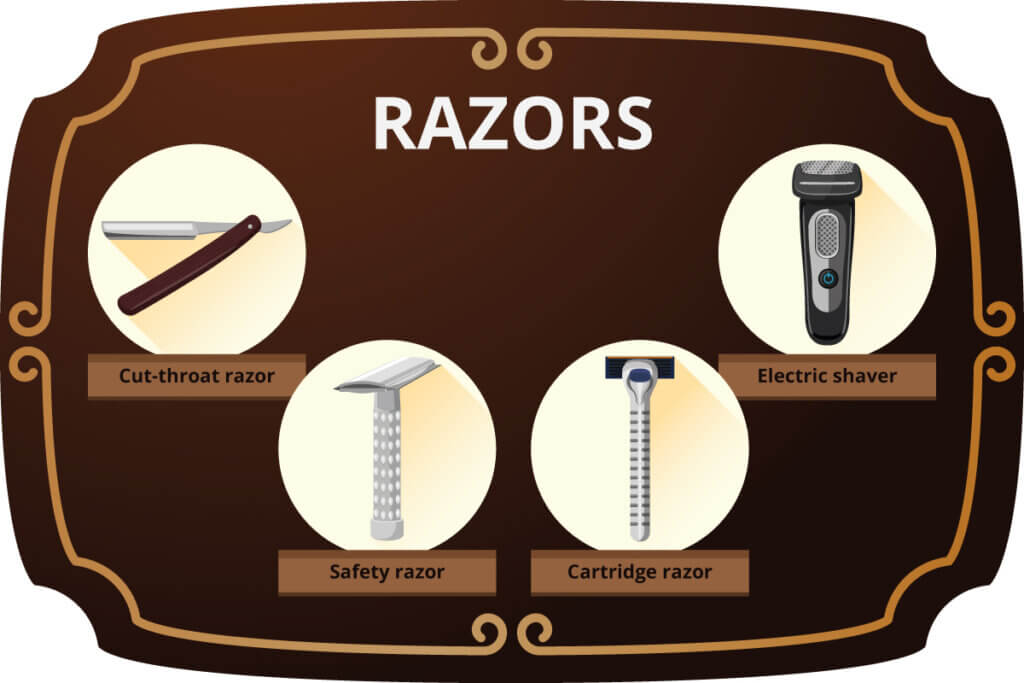
Straight razor/shavette
If you like things traditional, you might want to use a classic straight razor. Using one requires a bit of practice and dexterity, but it also gives your beard and contours a personal touch.
Safety razor
This is a razor for wet shaving. The replaceable blade protrudes a little on both sides of the head to prevent injuries. It is safer and easier to use than a straight razor. The razor removes facial hair completely.
Cartridge razor
Cartridge razors are a further development of the safety razor, and are currently the most common device for wet shaving. The razor has a replaceable multi-blade head. Cartridge razors remove beard hair completely.
Electric razor
They are electric razors for both wet and dry shaving. Electric razors are not very precise because the length of their blades cannot be adjusted. They are designed for a smooth full shave.
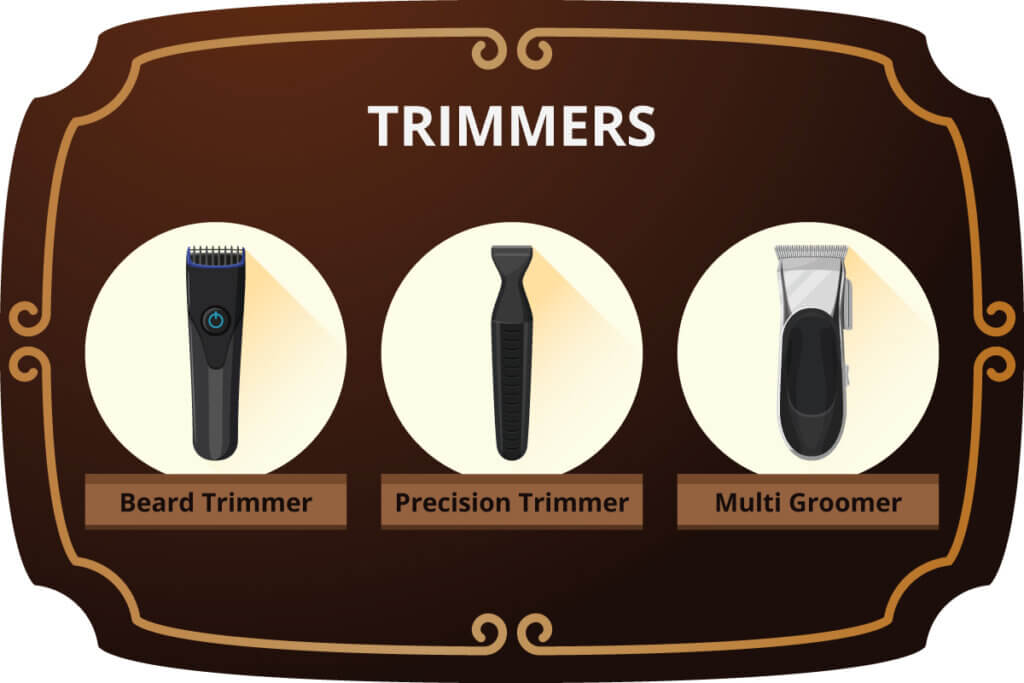
Beard trimmer
Beard trimmers are used for shortening beards. The blades are very thin and their length is adjustable. Due to their high precision, trimmers can also be used to cut contours. They are suitable for every type of beard.
Detail / precision trimmers
These devices have smaller heads than normal trimmers. They can be used to trim very precisely under your nose or on your chin. They are not primarily intended for shortening hair, but for styling contours.
Multigroomer
The all-rounder among the trimmers. They are suitable for cutting hair, beard care, and hair removal on the rest of your body. However, precise beard trimming is not possible due to the size of the blades.
Important purchase criteria
First of all, you should choose a product that suits your beard type. A conventional beard trimmer is suitable for the care of a multi-day or full beard. If you have a Van Dyke or circle beard, a detail trimmer is a good idea. If you only want to roughly trim your beard and shave other body hair, you should go for a multigroomer. In addition to the type of product, the features and characteristics of a shaver are also relevant: blades, attachments, battery, functions, cleaning and handling. Finally, price is of course also an important factor. High-quality trimmers are usually more durable and have a clean cutting pattern.
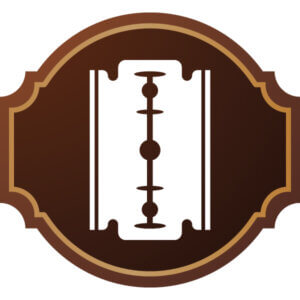
Blades
The quality of the blades is crucial for the efficiency of any trimmer. It is important to pay attention to how the blades are coated: carbon, titanium, ceramic or stainless steel. The coating gives the blades increased strength and ensures their longevity. Carbon and titanium coatings are harder overall. Some models also have self-oiling and self-sharpening blades. The former are automatically oiled via an oil tank in the housing while moving. Self-sharpening blades are aligned during operation so that they sharpen by rubbing against each other. Self-sharpening the blades hardly ever have to be changed. Replacement blades are available for most models, even if your trimmer has self-sharpening ones.
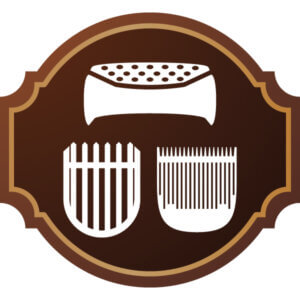
Attachments
Different attachments are needed depending on desired beard length. There are also special, finer attachments designed for contours. On some trimmers, the blade length can be adjusted directly on the device. These models should have a locking mechanism that prevents the selected length from being adjusted by applying too much pressure while shaving. If you get a trimmer with attachments, it is important to pay attention to their durability. Stainless steel is robust and does not bend when shaving. The attachments should be neither too hard nor too soft. Despite a flexible trimming head, stable handling must be ensured.
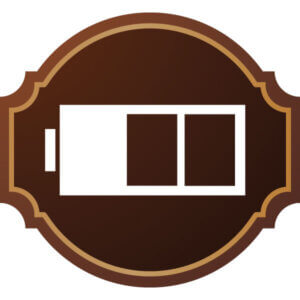
Battery
If it has a rechargeable battery, you can use your beard trimmer on the go. Devices with an LED charge indicator can quickly show the battery status. A quick-charging feature means that you only need to plug a trimmer in for a few minutes to allow for at least one shave. Beard trimmers with nickel-metal hydride batteries are inexpensive, but also have a long charging time. Trimmers with lithium-ion batteries are more expensive, but are also higher quality and longer lasting. Some beard trimmers can also be operated by cable in addition to the charging station. In this case, you are not dependent on the station and can even charge the trimmer during operation. However, such models are not completely waterproof. Many trimmers that are charged via a charging station, on the other hand, are.
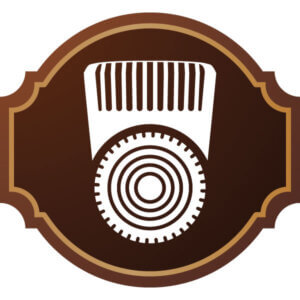
Functions
First and foremost, you should pay attention to the specifications for cutting length and width. The larger the selection and the finer the gradations, the more flexible you can be with beard care. The cutting width is primarily relevant for contours and “narrower” parts of the face, such as under the nose or around the mouth. Modern beard trimmers also have some practical extra gimmicks you might want to consider. Hair extractors ensure that a large part of the cut hair is sucked in directly after trimming. Laser projection can help to precisely trim the edge of your beard. Lines projected onto the face serve as a guide. The trimmer’s memory function saves the settings for your next beard trim.
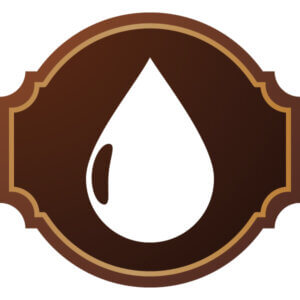
Cleaning
In terms of cleaning, it’s a great idea to get a waterproof trimmer. In the product description, you should pay attention to the difference between “washable” and “waterproof”. The former means that only the shaving head can be easily cleaned with water. “Waterproof”, on the other hand, means that the entire device can be cleaned and used under water. When using it, just be aware that wetness of the trimmer as well your beard can lead to different results. Use a cleaning brush to clean the beard trimmer after each use. The brushes are usually included, but a toothbrush will do as well.
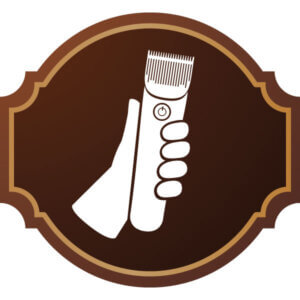
Handling
Before you use a beard trimmer for the first time, you should hold it in your hand and try out how the device feel. The ergonomics of the handle can have a negative influence on the cutting pattern if the trimmer does not fit properly in your hand. The handle should be comfortable and slip resistant. Models with a rubber grip and an ergonomic shape are recommended. Narrow and edge-free devices are particularly easy to handle and allow precise trimming. In addition, the controls should be easy to reach and arranged in such a way that you won’t accidentally press them during trimming.
What to consider during use
When using a beard trimmer for the first time, you should select a longer setting than you think. Then you can see if you like the length. If not, it is still possible to trim your beard further. For a full beard, trimming lengths of over 4 in (10 mm) are needed, while the setting for a three-day beard should start from 0.1 millimetre. You should be careful not to trim your beard when it is wet, as the hairs are smoother. Trimming smooth hairs can lead to uneven results. When using an attachment, you should move the trimmer against the direction in which your hair grows – without an attachment, trimming is also possible with the direction of growth. As a general rule, avoid heavy pressure as this can lead to skin irritation. In most cases you’ll need to repeat a few times to make all the hairs even.
Whom does a beard suit?
Beards don’t suit everyone. They need to fit with the rest of your appearance, and the style should work with the way in which hair grows on your face. Beards only fit well if they harmoniously complement and emphasize your facial lines. It is also important to take care of your beard and the skin underneath. You can use oil, wax and pomade to soften your hair and moisturize your skin. Regular combing and brushing helps to prevent your beard from becoming matted.
Beard care made easy
Beard care requires time. If you don’t have it, it’s better to shave it off. A well-fitting beard not only needs to be trimmed to the appropriate fit, but also cared for beyond that. Beard hairs require daily washing. Their structure is more similar to pubic and armpit hair than to scalp hair. These areas of the body contain sebaceous glands that produce the body’s own odors. To prevent unpleasant odors, regular cleaning with beard shampoo is essential.
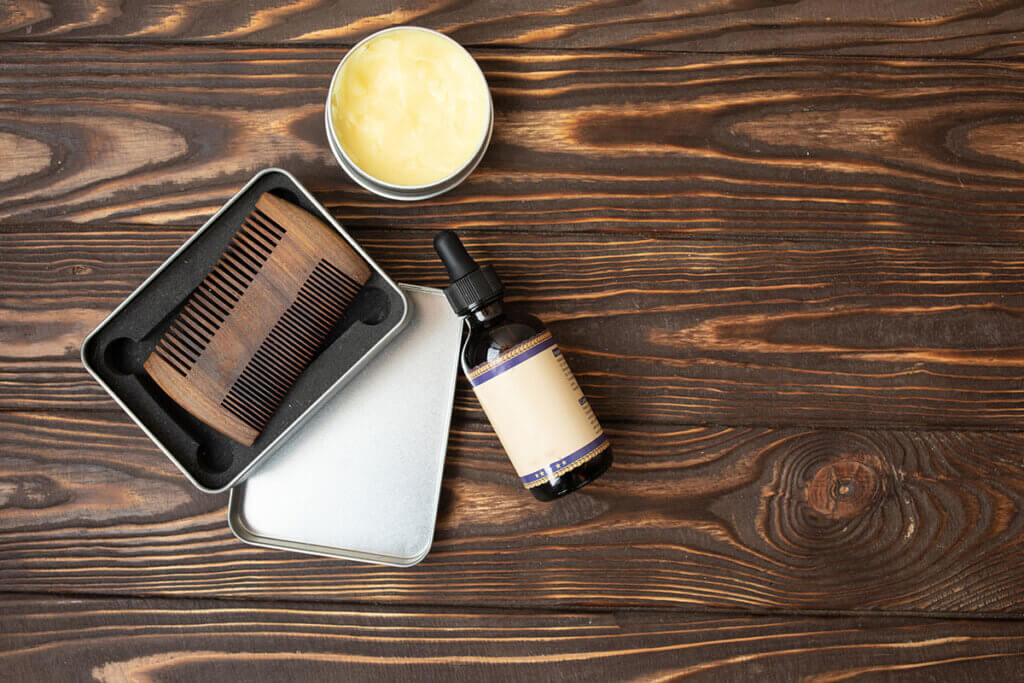
Afterwards, you should dry and smooth your beard. You can use a standard hairdryer to dry it; optionally, you might want to straighten it with a straightening iron if it is long enough. There are beard combs and brushes specially designed for facial hair on the market. Brushes massage your skin and remove sebum, while combs are good for detangling stubborn hair. You should go for a comb made of soft material, such as wood, horn or natural rubber. This said, regardless of the material, make sure it is well made.
If you want to keep your facial hair as supple and soft as possible, beard oil is a worthwhile investment. Not only does it keep your hair supple, ti also gives it a pleasant scent and a healthy shine. You can also use beard pomade to give your hair hold and prevent it from sticking out in all directions. Pomade is great for shaping your beard after trimming. A few skilful hand strokes can tame even the most stubborn facial hair.
Beards need hold
Pomade is often referred to as wax. But this is not quite right: wax is only one component of pomade, which also contains fat, vegetable oil, vitamins and perfume. The more wax is used in a pomade, the firmer it is. For a very firm hold, you should get some mustache wax. If you prefer your beard to be naturally soft, you should use a beard balm.
From stubble to full beard
The styles of beard we see today aren’t new inventions, they’ve been around for centuries. In fact, beards are a bit like wheels: they cannot be totally reinvented. However, there are countless variations, some of which differ only marginally from one another. Each style of beard requires a different kind of care.
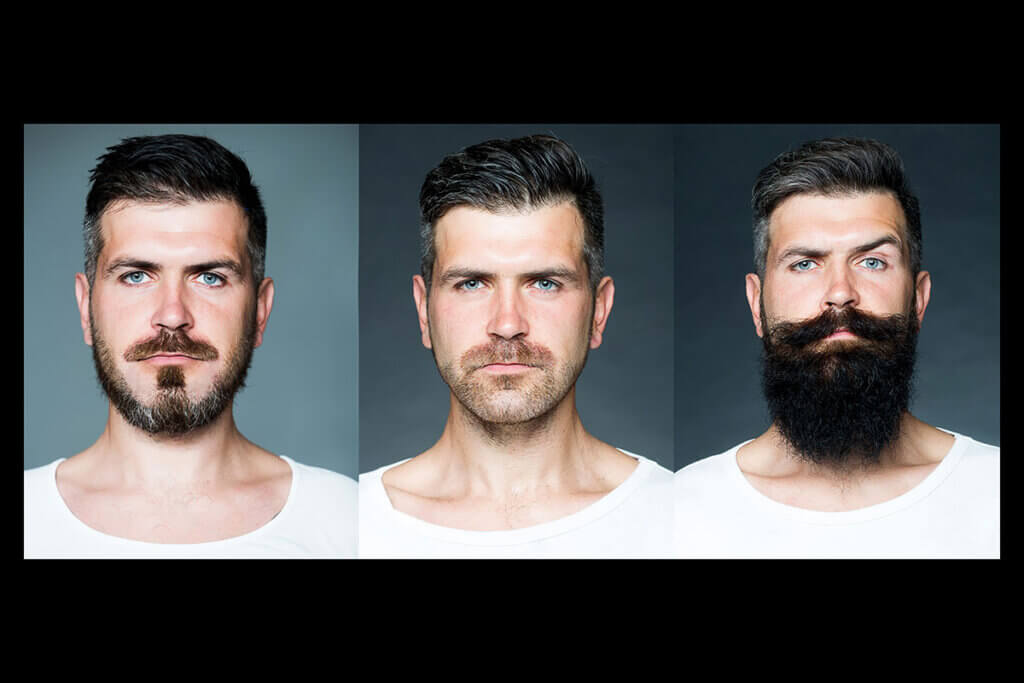
Three-day beards, for example, need to be kept short. They should look natural and unintentional. They should not grow too much, but also not look like they have been painted on. Full beards, on the other hand, can be a little more rampant, but they should be kept in shape. With some full beards, like the lumberjack style, it is important to keep the sides thin – having a lion’s mane is usually not very attractive. Having said this, other beard styles, such as the Garibaldi, thrive by being full and making your face appear rounder. A Van Dyke beard requires a lot of fancy mustache styling. Whether circle beard, Goatee, Fu Manchu or Soul Patch: a good-looking beard needs to be groomed.
Stubbly beard
This is a classic. Even if you have limited beard growth or thin beard hair you can follow this fashion trend. They are simple: just let your facial hair grow for a few days and then trim it down regularly to a few millimetres. However, even a three-day beard needs to be cared for properly. Washing your face and beard, and oiling it occasionally are a good idea. However, the amount of care required is low compared to other styles.
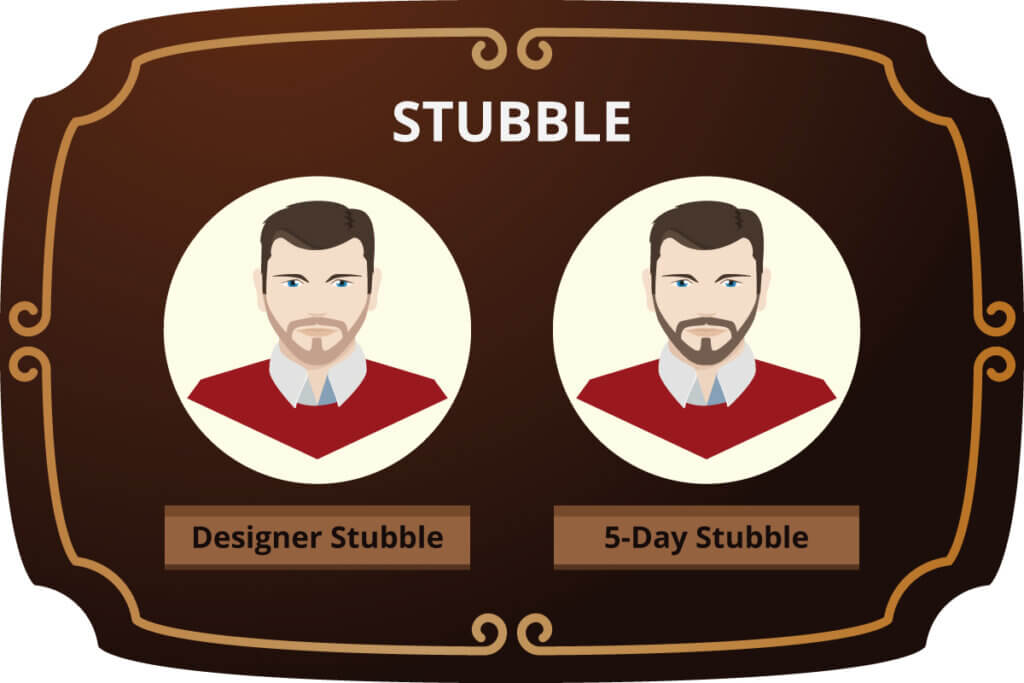
Full beard
This is another classic. The only prerequisite is having reasonably extensive beard growth. It is important that the full beard does not grow out unkempt. It needs to be trimmed into shape. Many men are proud of their facial hair, but it’s not everyone’s cup of tea: maintenance is quite time-consuming. A full beard must be washed, combed and oiled regularly. This is essential for clean and good-smelling facial hair. A brush is essential for massaging your underlying skin and removing sebum.
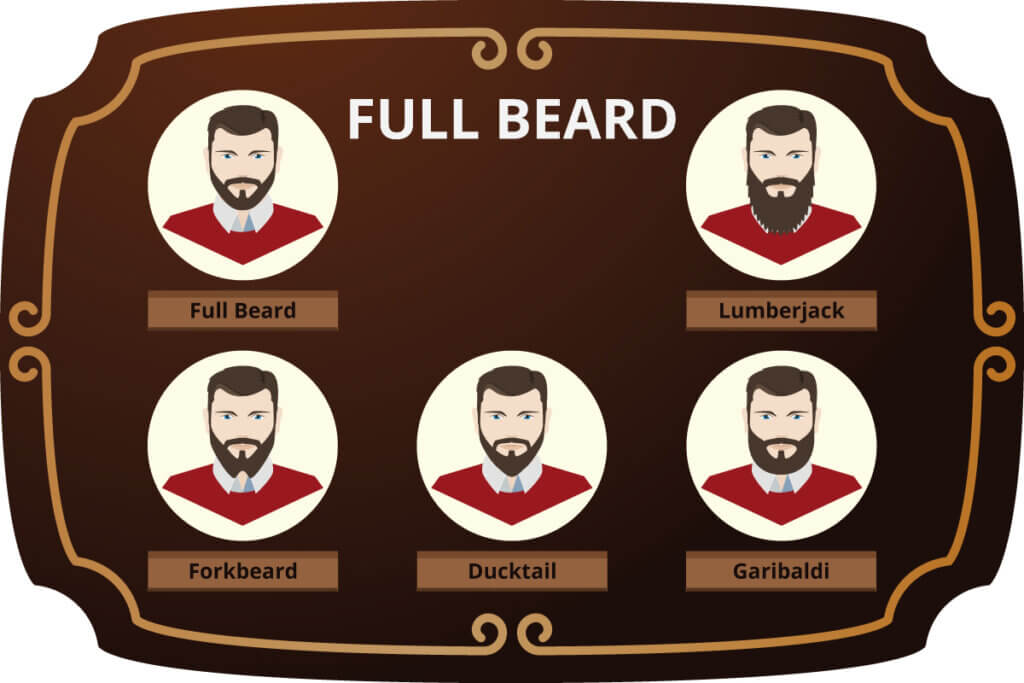
Chin beard
Small but mighty, chin beards only cover part of the face. They can also be extended to cover your lower jaw. Chin beards don’t tend to be very complex – they are usually short and minimal. But since this is also a beard, you must give it the appropriate care. Regular washing is crucial for preventing odors. It is also advisable to comb it afterwards, especially to prevent longer hairs from tangling. Overall, however, the amount of care required is minimal.
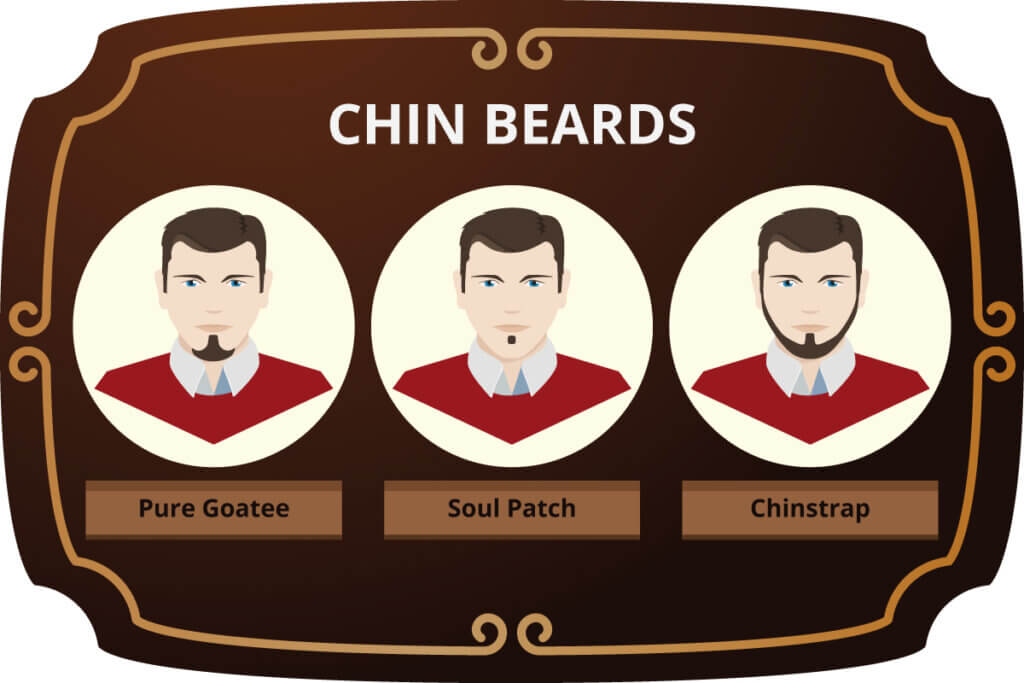
Chin beard and mustache
Chin beard and mustache combos have been in and out of fashion for centuries. You can either let the ends of the two individual beards grow together as a circular beard, or keep them separate. You shave your cheek and neck areas completely off. If you opt for a separated mustache, you have to make sure that your beard still turns out symmetrical. In addition, connecting your chin beard to your soul patch is important to create a visual bridge. The maintenance effort is minimal, but these beard types are quite fancy and require sensitivity in their design.
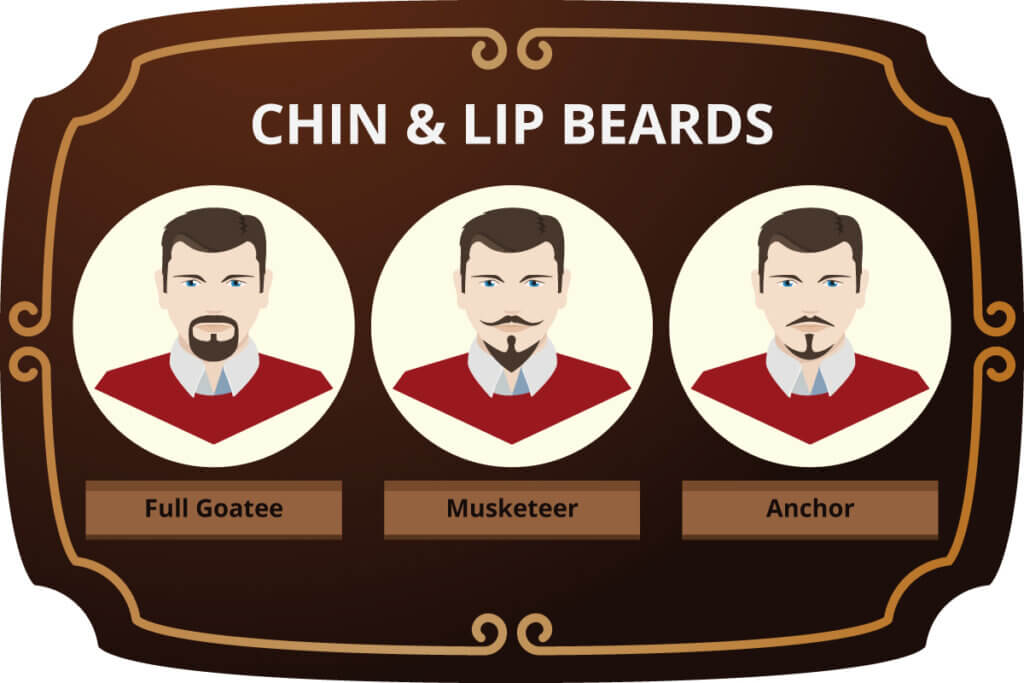
Sideburns
This form of facial hair is not as common nowadays as it was a few decades ago. If you want, you can limit yourself to just sideburns. In the case of mutton chops, you grow hair on your cheeks which merge into your mustache. Only the chin and lower lip area remain free. It is important that the edges are cut straight and form a line upwards to the corners of your mouth. Sideburns can be worn a few inches longer, depending on taste. These beard styles are quite simple, but maintenance is a little more extensive. Rule of thumb: more beard, more care.
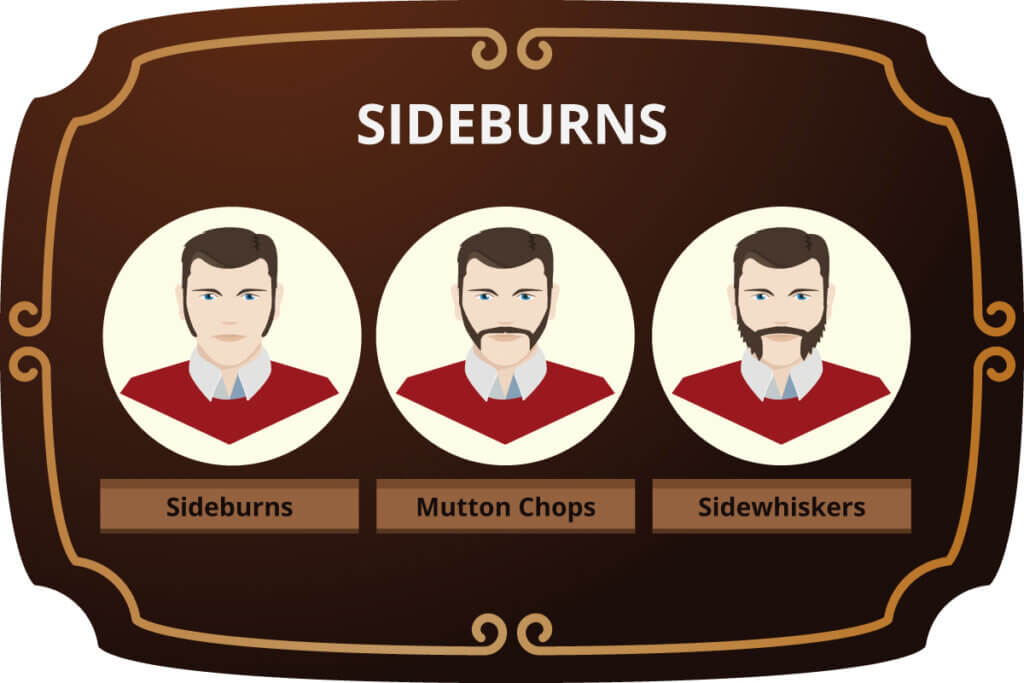
Mustache
There is a lot of styling potential above your lips. If you go for a horseshoe or a Fu Manchu, your mustache needs to grow down at the sides. Alternatively, you can just have hair on your upper lip. It’s up to you how fancy your mustache looks in the end. You can let it grow very bushy or reduce it to a minimum. Twirled ends make for a particularly extravagant appearance. Apart from the classic mustache, upper lip beards are quite a complex style despite their few hairs: they require a very accurate cut and also a lot of care to keep them in shape.
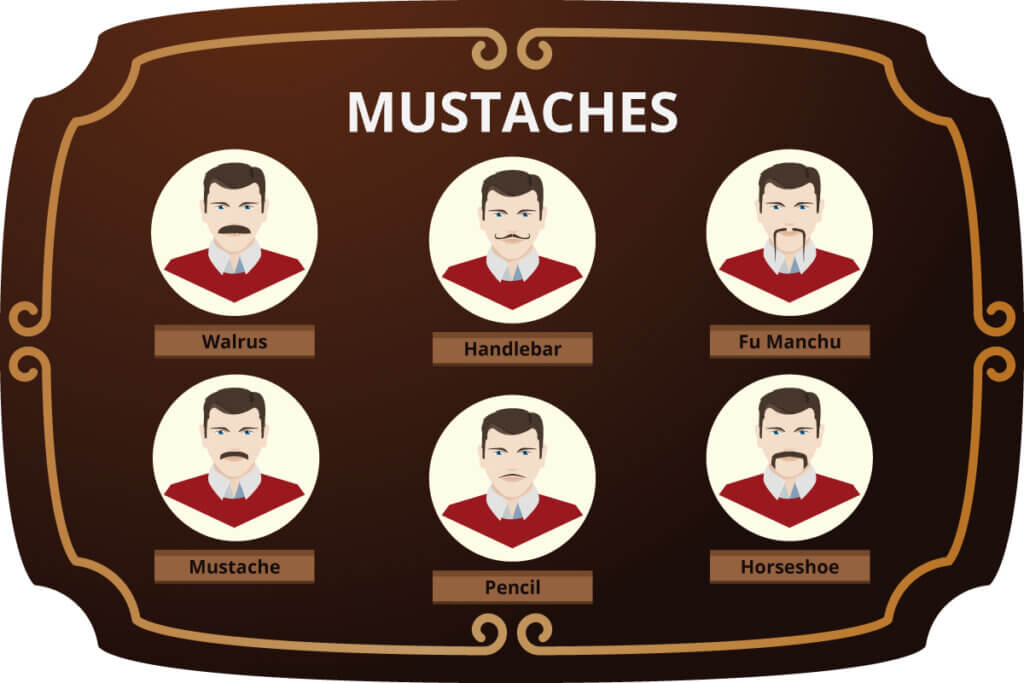
These are just a few well-known beard styles. There are many other ways to accentuate your facial hair. There are often only small but subtle differences between the styles. Above all, it is important that the style matches your beard growth as well as your overall appearance.
When the growth stretches out
The longest beard ever grown belonged to Hans Nielsen Langseth. At 17.5 ft (5.33 m), the Norwegian, who died in 1927, still holds the official record for the longest beard.
Leading beard trimmer manufacturers
There are many products from numerous manufacturers on the market. Below are some sample models from the market leading manufacturers.
AEG
The Allgemeine Elektricitäts-Gesellschaft (German for ‘General electricity company’) focuses on design in their beard trimmers. The HSM/R 5638 has a unique look, but is less handy than competing products. The device is multifunctional and can be used as a precision trimmer as well as a hair clipper. The models 5596 and 5614 of the HSM/R series can also be used to trim the hair on your head. All devices can be washed under water, work with a rechargeable battery and have stainless steel blades only. AEG beard trimmers are equipped with comparatively few functions, but they also only cost $15 to $20.
BaByliss
This French company produces beard trimmers that have a cutting length of either 0.4 to 12 millimetres or 1 to 35 millimeters, depending on the model. The former category includes devices that cost between around $40 and $80. The beard trimmers can also be used as precision trimmers. Their beard trimmers are advertised as having blades from Japanese forging. The Beard Trim is designed for lengths of up to 35 millimeters. The model, which comes with a hair catcher, can be bought for around $40. The I-Stubble by BaByliss is a precision trimmer for lengths of 0.4 to 5 millimeters that comes with a digital display for the cut length. However, the device costs around $100.
Braun
The beard trimmers of the BT series offer up to 39 different cutting lengths and also advertise blades that are sharp for life thanks to a self-sharpening function. In addition, trimmers from the German manufacturer have AutoSense technology. This recognizes your beard growth and adjusts the power of the motor to the beard density. Braun devices can quick charge and are 100% waterproof. This makes them suitable for travel. The models differ in their accessories and in their compatibility with the various attachments. The BT3021, for example, is only suitable for shorter beards. The BT7040 and BT7020 can trim long beards and can also be used as precision trimmers. Depending on the model and supplier, the devices can be had for around $30 to $60.
Grundig
The German company sells beard trimmers in the MC and MT series. The MT 6340 model has a high-quality carbon cutting set and 30 different cutting levels. The device received a good quality rating and is available for around $30. The MC 9542, which can also be used under running water can be found for around $40. On average, Grundig trimmers are cheaper than those of the competition. The German manufacturer attaches particular importance to the quality of the blades in its beard trimmers: Carbon, titanium and ceramic are standard.
Panasonic
The Japanese electronics company offers various beard trimmers. Some models, like the ER-GB96, have up to 58 cutting lengths thanks to various attachments. Head, body and beard hair can be cut to a length of 0.5 to 30 millimeters. Operation is via a setting wheel—just like the GC series, which is characterized by its x-shaped clipper blade shape. The ER-GC71‘s up to 39 length settings can be used not only for simple shaving, but also for drawing lines and working on edges. In terms of price, the devices range from around $40 to $100. As a Japanese company, Panasonic celebrates Japanese craftsmanship: the razor blades are made of Yasuki Hagane stainless steel, which is traditionally used to make samurai swords.
Philips
The Dutch appliance manufacturer is particularly innovative when it comes to beard trimming technology. They sell the world’s first beard trimmer that uses lasers. The BT9297/15 projects a line onto your face that you cut along. With the help of the 17 different cutting lengths and the self-sharpening blades, a precise result can be achieved. The model costs around $90. Another innovation that Philips advertises is the OneBlade technology. The OneBlade Face QP2530/30 is equipped with a blade that cuts 200 times per second. The attachments of the $50 trimmer are suitable for different beard styles, but best for shorter three- to five-day beards. A double-sided blade also makes it possible to trim contours.
Remington
With its MB series, the US manufacturer offers various beard trimmer models that cost between $30 and $80. The MB6850 is an innovative vacuum device that collects up to 95 per cent of cut beard hair during use. The various attachment combs of the device, which costs around $70, allow both the beard and the main hairs to be trimmed. The MB4700 costs about ten dollars more and offers a memory function and SenseSpeed technology. The former saves the last four length settings and shows them on the LED display. The latter automatically adjusts the speed of the titanium-coated blades to the degree of facial hair. Remington also offers precision trimmers for $30 to $60 with the MB010, MB050 and MB070. The waterproof devices have double-sided rounded blades that can also be used against the direction of growth.
Images 1-8: © FinalCheck | Image 2: © lashkhidzetim / stock.adobe.com | Image 3: © Volodymyr / stock.adobe.com | Images 4-10: © FinalCheck



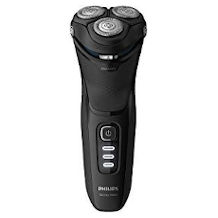
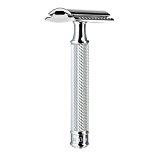
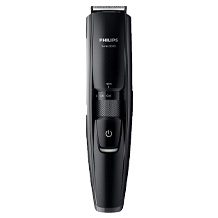
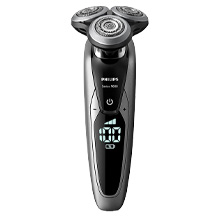



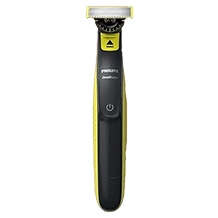




 4,887 reviews
4,887 reviews




